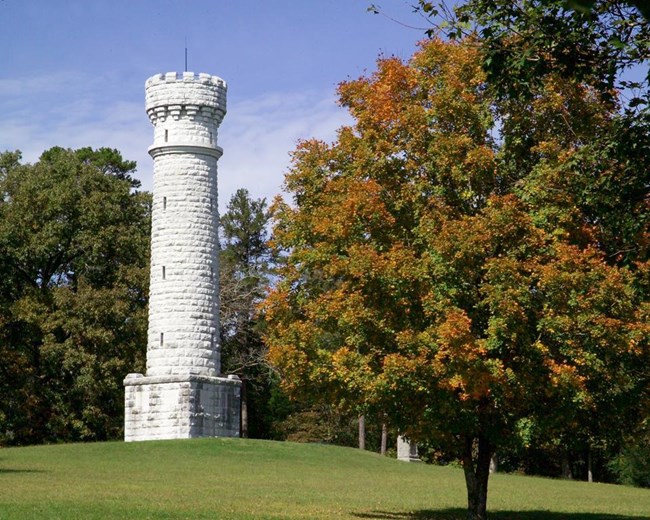Learn about NRCAs
The Natural Resource Condition Assessment (NRCA) Program provides framework, funding, and publishing support to parks to aid in the synthesis and documentation of natural resource conditions. Condition assessment reports are a tool to describe selected park resources, and record a snapshot of their current condition, identify trends, and identify potential or current threats and stressors. Understanding the condition and trend of natural resources is key for parks and NPS planners to appropriately prioritize and allocate stewardship resources.

Photo by Jim Szyjkowski, NPS.
Today nearly 10,000 acres of preserved and uninhabited landscape encompass Chickamauga and Chattanooga National Military Park, making it one of the largest outdoor green spaces in the Chattanooga area.
Traditional NRCA Report: 2018
In an effort to better understand and manage natural resources of the park, a Natural Resource Condition Assessment was completed, and published in 2018. Staff from the National Park Service (NPS) and Saint Mary’s University of Minnesota (SMUMN) worked together to identify the natural resources and stressors to include in this condition assessment. The final report considers ten resource topics:
- Hardwood forest community |
||
- Limestone cedar glades |
||
- Wetlands |
||
- Cave bats |
||
- Birds |
||
- Herpetofauna |
||
- Water quality |
||
- Air quality |
||
- Adjacent land cover and use |
||
- Soundscape and acoustic environment |
Current condition was not able to be determined for just 1 of the 10 natural resource components (soundscape and acoustic environment) due to data gaps. For those components with sufficient available data, the overall condition varied. Three components were determined to be in good condition: water quality, birds, and herpetofauna. However, water quality was at the edge of the good condition range, and any small decline in conditions could shift it into the moderate concern range. Two components (hardwood forest community and wetlands) were of moderate concern. The remaining four components were of significant concern: limestone cedar glades, cave bats, air quality, and adjacent land cover and use.
Several park-wide threats and stressors include invasive exotic species, adjacent land use/development, and climate change. Understanding these threats, and how they relate to the condition of park resources, can help the NPS prioritize management objectives and better focus their efforts to maintain the health and integrity of the park ecosystem, as well as its historically significant landscape.
For other reports and natural resource datasets visit the NPS Data Store.
Source: NPS DataStore Collection 7765 (results presented are a subset). To search for additional information, visit the NPS DataStore.
Last updated: June 28, 2022
